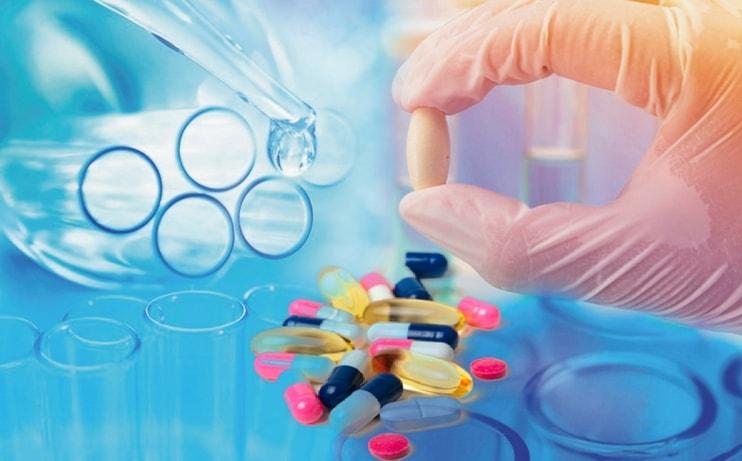Introduction
In the realm of modern medicine, life-saving drugs play a crucial role in managing and treating a wide range of serious illnesses and conditions. These medications are often used in emergency situations or for chronic diseases, making them indispensable in healthcare systems worldwide. Their ability to dramatically improve or even save lives underscores their significance and highlights the importance of continued research, development, and access to these critical treatments.
What Are Life-Saving Drugs?
Life-saving drugs are medications that are essential for the management of life-threatening conditions. They are typically used to treat acute and chronic diseases, infections, and other medical conditions that, if left untreated, could lead to severe complications or death. These drugs can be categorized into several types, including antibiotics, antivirals, anticancer agents, and drugs for chronic diseases such as diabetes and heart disease.
Ibrutinib manufacturer price can vary significantly depending on the market, regulatory environment, and manufacturer agreements, with costs often being higher in high-income countries compared to lower-income regions.
Key Categories of Life-Saving Drugs
- Antibiotics: Antibiotics are crucial for treating bacterial infections. Without effective antibiotics, many common infections could become fatal. Examples include penicillin, amoxicillin, and ciprofloxacin. These drugs work by either killing bacteria or inhibiting their growth, allowing the body’s immune system to effectively combat the infection.
- Antivirals: Antiviral medications are used to treat viral infections. They are essential in managing diseases like HIV/AIDS, hepatitis, and influenza. Drugs such as antiretrovirals for HIV, like zidovudine (AZT) and tenofovir, and antiviral medications for hepatitis B and C, such as ribavirin, are vital for controlling these infections and preventing their progression.
- Anticancer Agents: Cancer treatment often involves a combination of surgery, radiation, and chemotherapy. Chemotherapy drugs, such as cyclophosphamide, etoposide, and doxorubicin, are used to target and kill cancer cells. These drugs can be life-saving by helping to control or eliminate cancerous tumors and extend the lives of patients.
- Drugs for Chronic Diseases: For chronic conditions like diabetes and heart disease, medications are critical for managing symptoms and preventing complications. Insulin and metformin for diabetes, as well as beta-blockers and statins for heart disease, are examples of drugs that can significantly improve quality of life and longevity.
The Importance of Access to Life-Saving Drugs
Access to life-saving drugs is a fundamental aspect of healthcare. Without it, many people may suffer from preventable deaths or complications. Access can be influenced by factors such as availability, affordability, and distribution networks.
- Availability: Ensuring that life-saving drugs are available in all regions, including remote and underserved areas, is crucial. This often requires robust supply chains and effective distribution systems to reach those in need.
- Affordability: The cost of medications can be a barrier to access. High drug prices can prevent patients from obtaining necessary treatments, especially in low-income regions. Policies such as generic drug availability and price controls are important for making medications more affordable.
- Distribution: Effective distribution systems ensure that medications reach healthcare facilities and pharmacies efficiently. This includes managing logistics, storage conditions, and transportation.
The Role of Pharmaceutical Manufacturers
Pharmaceutical manufacturers play a pivotal role in the production of life-saving drugs. Their responsibilities include researching and developing new medications, ensuring quality control, and managing large-scale production. Some key aspects of their role are:
- Research and Development (R&D): Pharmaceutical companies invest heavily in R&D to discover new drugs and improve existing ones. This involves preclinical studies, clinical trials, and regulatory approvals. Successful R&D leads to the creation of new life-saving drugs and innovative treatments.
- Quality Control: Ensuring the safety and efficacy of medications is critical. Manufacturers must adhere to strict quality control standards and regulations to prevent issues such as contamination or incorrect dosages.
- Production: Large-scale production of medications requires sophisticated technology and facilities. Manufacturers must maintain high standards in their production processes to meet the demand for life-saving drugs.
- Distribution and Supply: Pharmaceutical companies are responsible for ensuring that their products are distributed efficiently and safely. This involves managing supply chains, handling logistics, and ensuring that drugs are stored properly.
Challenges in Life-Saving Drug Development and Distribution
Developing and distributing life-saving drugs comes with its set of challenges. These challenges include:
- High Costs: The R&D process for new drugs is expensive and time-consuming. The cost of bringing a new drug to market can run into billions of dollars, which can impact the affordability of medications.
- Regulatory Hurdles: Drug development is subject to rigorous regulatory requirements. Navigating these regulations can be complex and delay the availability of new treatments.
- Global Disparities: There is a significant disparity in access to life-saving drugs between high-income and low-income countries. Efforts to address these disparities include international aid, collaboration with non-governmental organizations, and initiatives to increase drug availability in underserved regions.
- Antibiotic Resistance: The rise of antibiotic-resistant bacteria poses a serious threat to the effectiveness of antibiotics. This highlights the need for ongoing research and development of new antibiotics and alternative treatments.
Read more: Specialitymedz
Examples of Life-Saving Drugs and Their Impact
- Penicillin: Discovered in the 1920s, penicillin revolutionized the treatment of bacterial infections. Its introduction has saved countless lives and paved the way for the development of other antibiotics.
- Insulin: The discovery of insulin in the 1920s transformed the management of diabetes. Prior to insulin, diabetes was often a fatal disease. Today, insulin therapy allows people with diabetes to lead healthy lives.
- ARVs (Antiretrovirals): Antiretroviral drugs have been a game-changer in the treatment of HIV/AIDS. They reduce the viral load in the body, allowing individuals to live longer and healthier lives.
- Chemotherapy Agents: Drugs like cyclophosphamide and etoposide have been instrumental in treating various cancers, significantly improving survival rates and quality of life for cancer patients.
Future Directions in Life-Saving Drug Development
The future of life-saving drug development holds promise with advances in biotechnology, personalized medicine, and global health initiatives:
- Biotechnology: Innovations such as gene therapy and monoclonal antibodies are paving the way for new treatments for previously untreatable conditions. These advancements offer hope for more effective and targeted therapies.
- Personalized Medicine: Tailoring treatments to individual genetic profiles can enhance the efficacy of drugs and reduce adverse effects. Personalized medicine represents a shift towards more precise and effective healthcare.
- Global Health Initiatives: Collaborative efforts between governments, organizations, and pharmaceutical companies aim to address global health challenges. Initiatives to improve access to life-saving drugs and support healthcare infrastructure in low-income regions are crucial for advancing global health.
Conclusion
Life-saving drugs are essential components of modern healthcare, providing crucial treatments for a wide range of serious conditions. Their development, availability, and accessibility are fundamental to improving health outcomes and saving lives. As we move forward, continued innovation and efforts to address challenges in drug development and distribution will be key to ensuring that these vital medications remain available to those who need them most. By investing in research, fostering collaboration, and working towards global health equity, we can continue to make strides in the fight against life-threatening diseases and improve the quality of life for people around the world.




